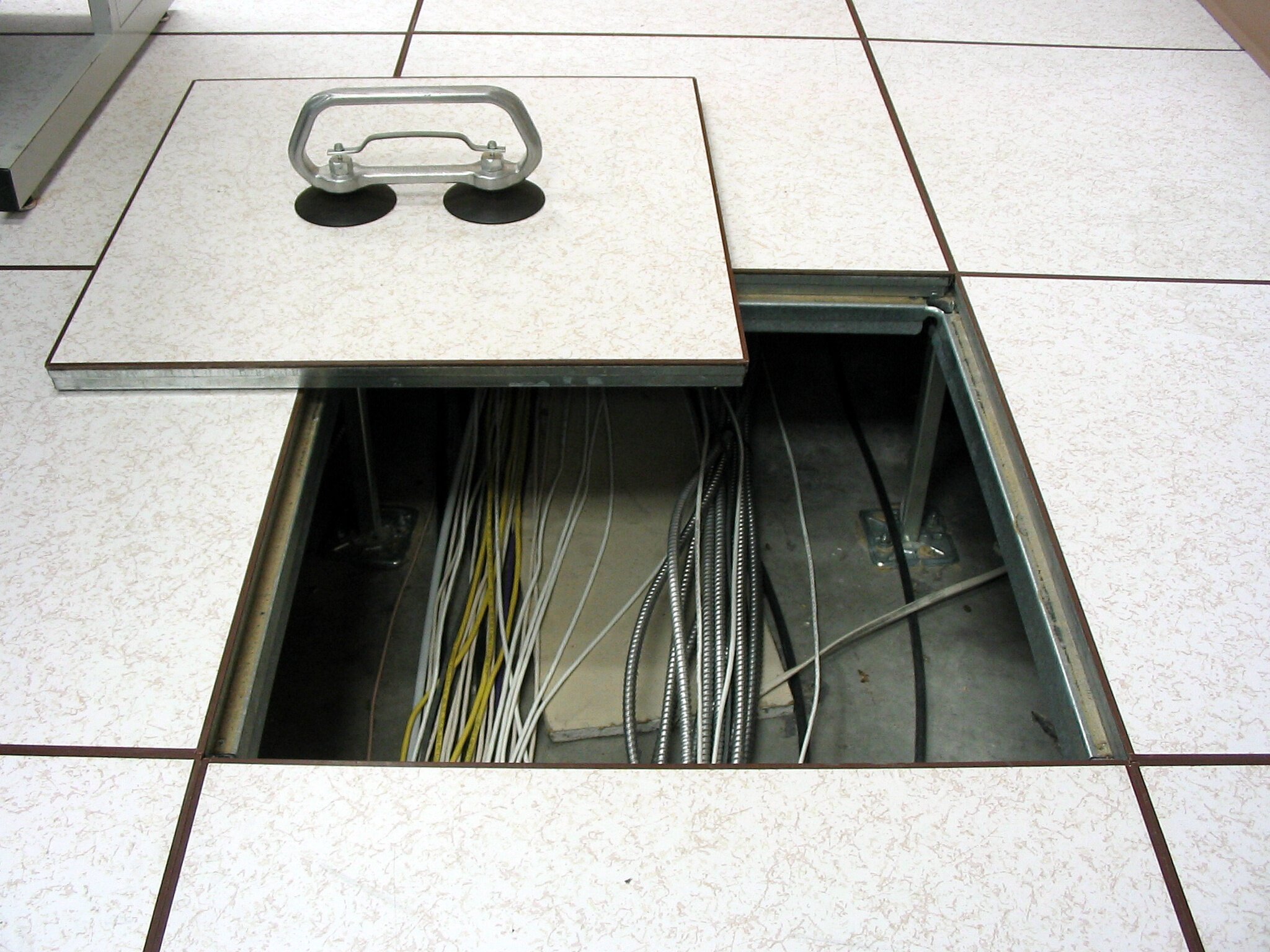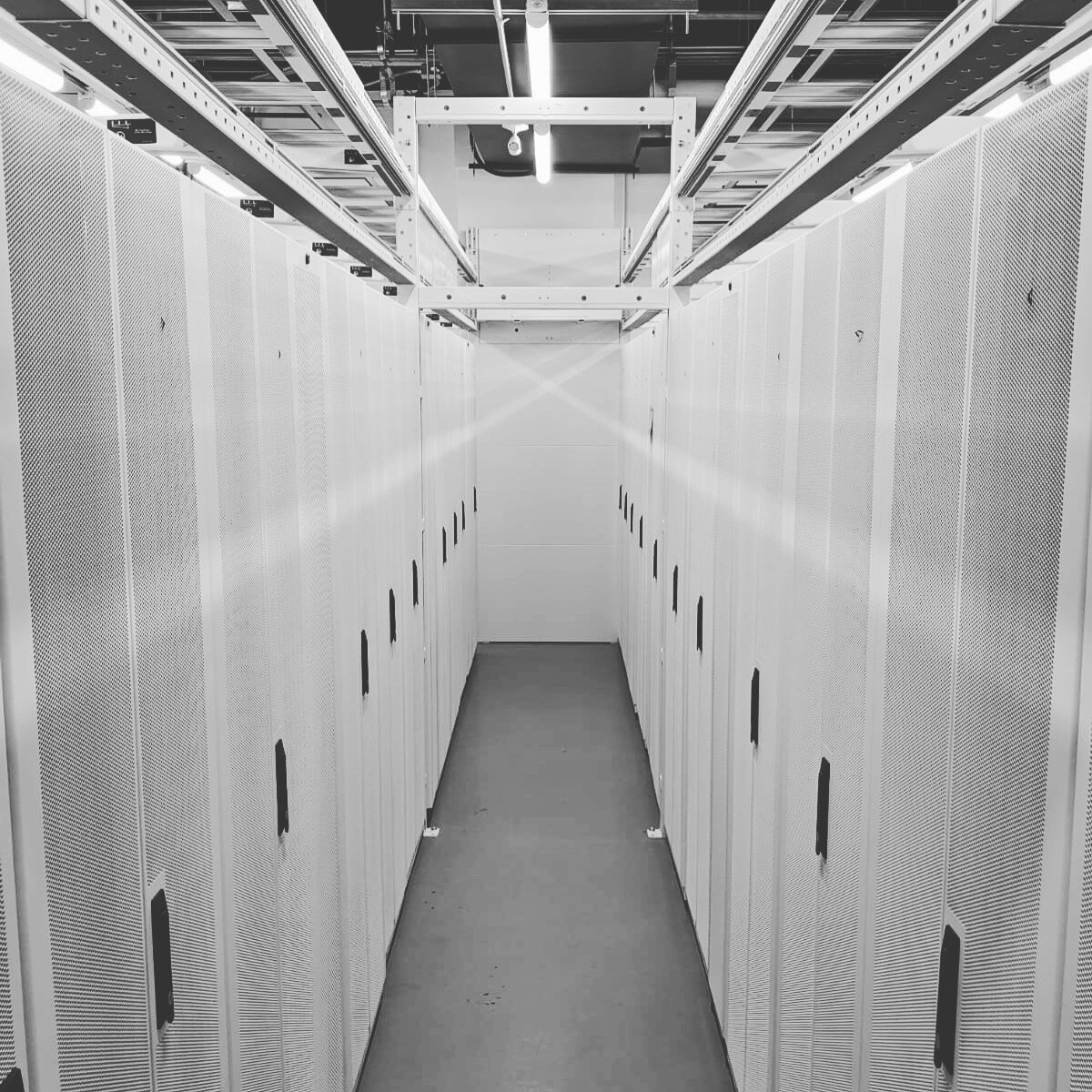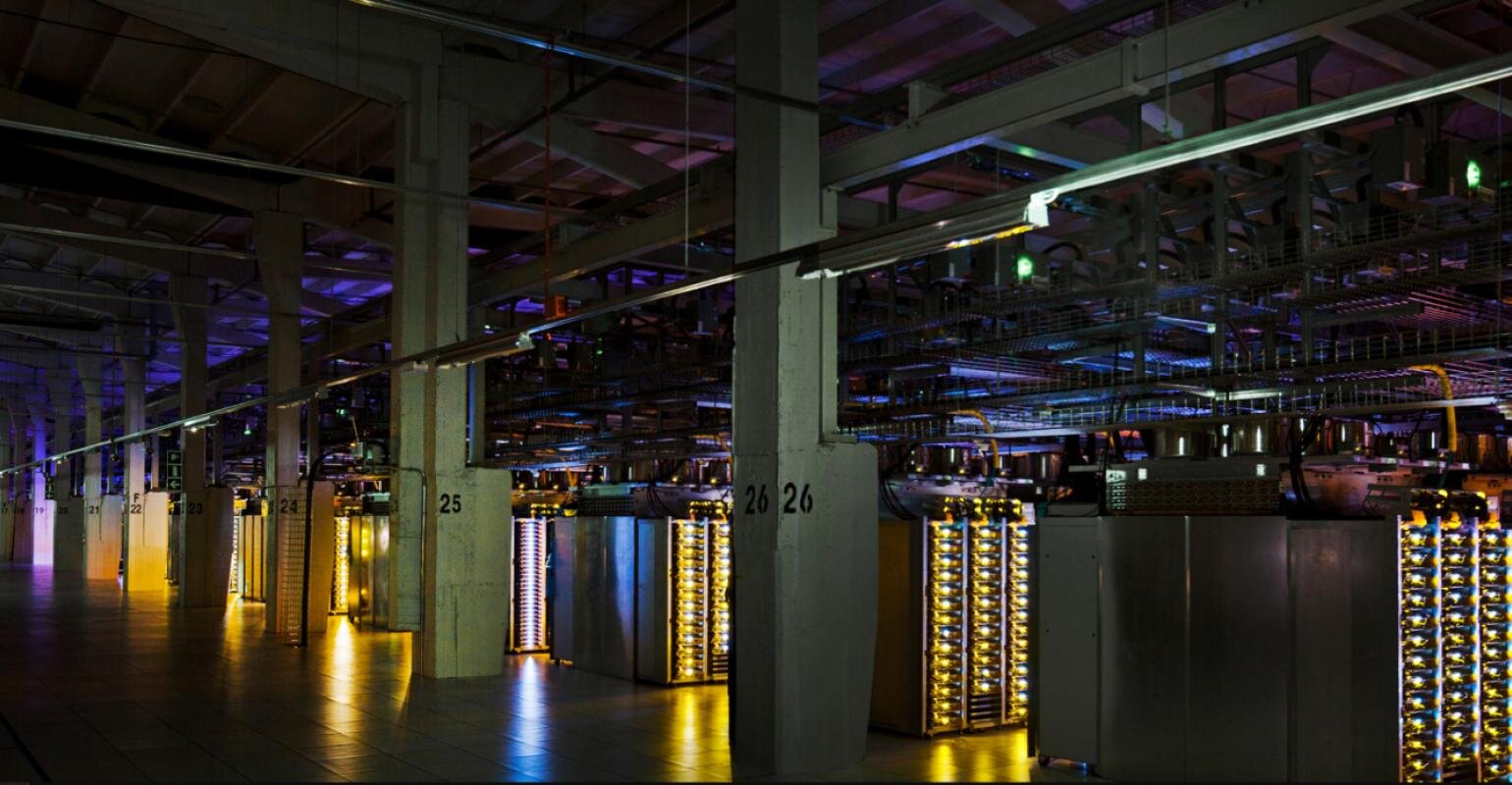Anyone who has been in a data center in the last twenty years has walked on raised floor. They were originally designed to provide the cooling fed from central CRACs through perforated tiles at the front of the racks. It also provided the space for the electrical and networking runs.

Air has a tendency to move around objects and over time the rat’s nest that swells under the racks creates an air maze. Nothing airmazing about hard working air that can’t find its way out to deliver balanced cooling.
Slab floors put all mechanical, electrical, and networking overhead on cantilevers, trays, and raceways – nowhere to hide dodgy workmanship. No weight restrictions other than structural limits, no concerns with point loads, and navigating ramps with skids of heavy equipment becomes much safer. Slab floors if properly grounded and prepared with ESD wax help dissipate electrostatic charge.

Both have their pros and cons, and slab floors seem like the flavor of the year, but this debate will continue until one is proven to provide electrical, cooling, and cost efficiency well beyond nominal margins over the other.



